Entrepreneur
Cutting through the noise in femtech – key takeaways from Women’s Health Week 2025

The flagship women’s health summit brought together over 400 visionary founders, funders and innovators, with a shared mission of transforming women’s health worldwide.
This year’s Women’s Health Week, which took place at the Barbican, London from 14-17 October, showcased a sector once considered by funders to be too much of a ‘niche’, meeting a crucial unmet need with huge market demand.
Investments are outperforming their value, regulators want to speed up the route to market, and clinical validation is cutting through the noise and demonstrating real results.
There is a buzz about the femtech sector – or at least there was in the Barbican last week – but experts have urged founders should move forward responsibility, building ethics and equity into their innovations.
Here’s our takeaways from the key conversations at Women’s Health Week.
1. Women’s health is outperforming – but angels and influencers are crucial for raising capital
Investment in women’s health is outperforming, and this trend is expected to continue, according to the panel at Women’s Health Week on Thursday 16th, where fund managers and founders highlighted significant returns, growing institutional interest, and the critical role of early-stage backers.
Sanji Chotai, a senior investment manager at British Business Bank, says she is seeing “really encouraging data” and anticipates more “outperformance”, particularly in medtech, which is drawing interest thanks to “shorter timelines to regulatory approval” and rapid commercialisation.
Series A and B activity is also picking up, but the panel agreed that early-stage capital and angel investors remain essential.
“My first angel investment in a women’s health company, I think on Series A, is going to be 20x on multiple and for our fund, it’s going to be around 9x,” said Trin Linamagi, founding partner at Sie Ventures.
“We need to take bigger bets and double down – and actually put the capital behind these businesses early on.”
Having driven successful campaigns for Soulcycle and Barry’s Bootcamp, Tatum Getty, now a founding general partner at THENA, also highlighted the importance of influencers – and not just on Instagram.
“Who is that person who believes in what we’re building and will tell their friends,” she said.
“Women have not been traditional investors they are more risk averse, smaller investment but bigger impact. They add so much more value than the amount of capital that they contribute.”
2. NICE and new pathways for health technologies
During a discussion on mastering Europe’s regulatory process, a representative from the National Institute for Health and Care Excellence (NICE) outlined how new rules-based approval routes, now being introduced for health technologies, are designed to speed access to innovation.
The body is also better aligning processes with the Medicines and Healthcare products Regulatory Agency (MHRA) to reduce the time it takes to regulatory approval.
“We’re taking forward the rules-based pathway for health tech,” said Kendall Gilmore, a senior advisor at NICE.
“Developing a model more similar to the medicines pathway, where, for some products, it goes through the MHRA, through NICE and then comes with a recommendation that has a funding mandate attached.”
The pathway, currently being developed will see health technologies assessed in a similar way to medicines with the first products approved from April next year.
NICE currently evaluates only a fraction of the 500,000 technologies used daily in the NHS. While a NICE recommendation is “not mandatory”, it can be a “powerful signal” to the NHS.
NICE is constantly “horizon scanning” for “disruptive products” further down the pipeline and is engaging more directly with innovators, industry associations and international partners to identify promising technologies earlier, and a new early value assessment route is giving promising products a faster track.
“If it meets an unmet need, it should be used with further evidence generation,” Gilmore explained.
“This is particularly relevant for digital health and diagnostics.”
3. Scientific validation is the most effective way to ‘cut through the noise’
In a panel exploring how to “cut through the noise” in femtech, founders were urged to bake credibility into product design from day one, with scientific proof and clinical validation the sharpest differentiator, according to Soun Rakshit, of MV Health.
“You have to spend probably two years going through the R&D process,” said Rakshit.
“That is the best and probably the only way to do it, so that by the time you get regulatory approval, you have already had significant patient feedback and iteration.”
Earning trust also means collaborating with experts who understand the problem, as Helen O’Neil, founder of Hertility, explained.
When in the development stage, O’Neil reached out to professionals, including obstetricians and gynaecologists to understand the right questions to ask based on their “clinical intuition and personal experience”.
Rakshit added: “If we can show true clinical evidence, and it does take time, it is the best way to cut through the noise.”
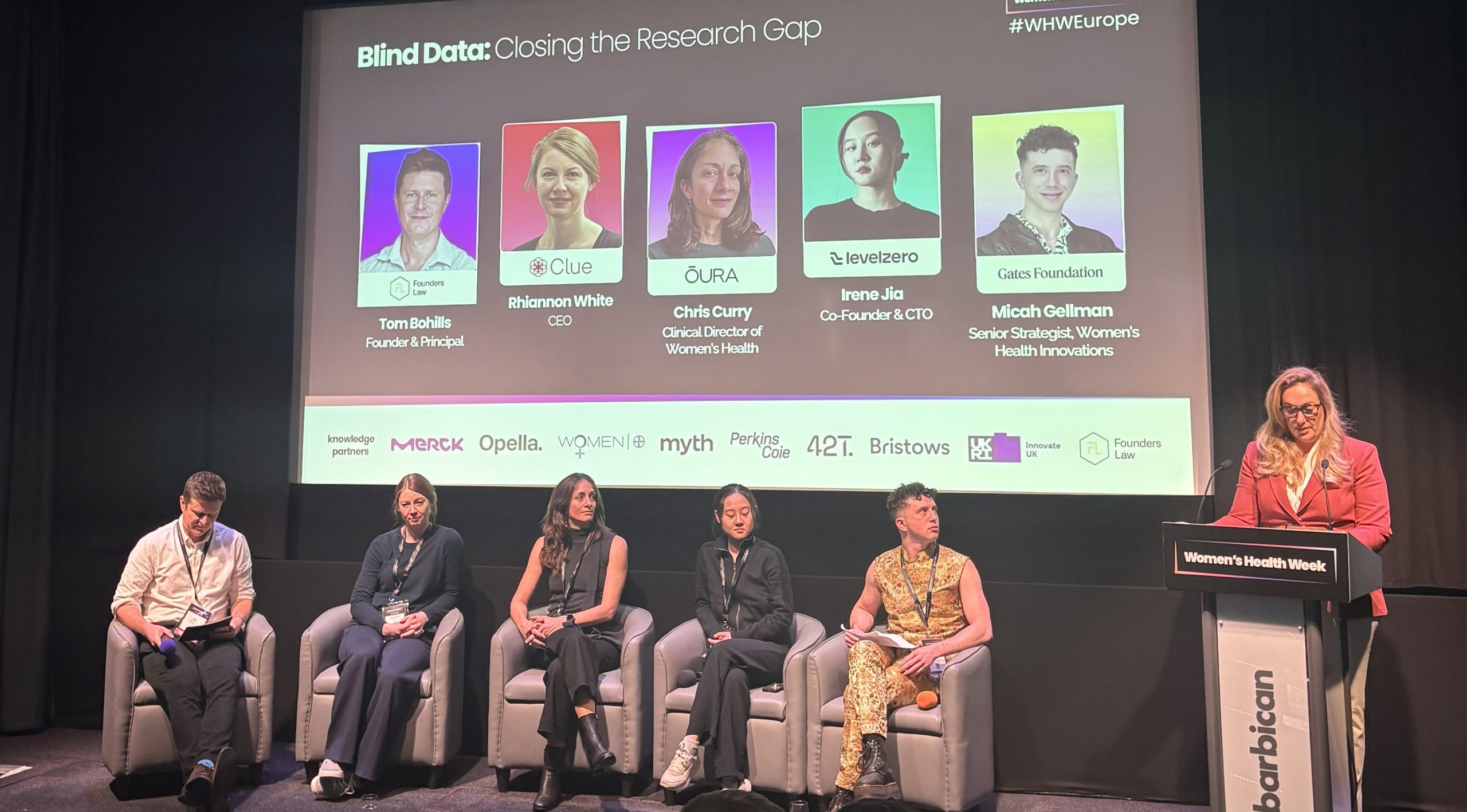
4. Bias in AI is ‘real and harmful’ – and founders need to know how to address it
Experts discussed the role of AI and its potential to both help and harm women’s health, urging proactive testing and human oversight to avoid the risk of decades of a “male default model” being implemented into new solutions.
“AI that’s trained on that skewed data can really fail women,” said Sarah Montgomery Taylor, clinical lead of GenAI evaluation and scaled services at Google, highlighting familiar examples such as heart-attack presentation.
“Biases are real, and they are really harmful, and so being aware of them is so crucial.”
Panellists also flagged “measurement bias” and the “historical dismissal of women’s pain,” where systems trained on those records “can learn to deprioritise” certain signals.
Beyond bias in diagnostics, Marinos Ionnides, head of software and AI medical devices regulation at the MHRA, highlighted the risks of implementing AI in areas where there may be hidden bias.
“I’m quite worried about the deployment of software AI in places where we aren’t we didn’t know we would be finding bias [such as] appointment booking,” he said, adding that in these “unknown unknowns,” “the regulator has their greatest role”.
Founders were urged to be responsible when scaling AI, introducing guardrails such as building in equity and collecting data from the very beginning for “rigorous real-world validation”.
Clinicians need to be able to test the product and understand it to build trust, while regulatory processes should be “adaptive”, offering “clarity on what the path is to market”.
Chen Davies, founder at Anya, shared a real-world example of how products and content tailored for underserved groups drove measurable change, including a “10% population-wise” rise in breastfeeding rates in a deprived area of Blackpool after six months.
“AI should gradually complement human support without replacing it,” said Davies.
5. Consumer data can play a critical role in building the clinical evidence-base
During the final panel, participants argued that continuous real-world data, paired with clinical benchmarks, is the fastest way to fix women’s health’s “male baseline” problem and turn lived experience into evidence.
Dr Chris Curry, clinical director for women’s health at Oura, argued that wearables are “one of the big unlocks” by collecting data that gives the “whole picture of the human”.
But tracking can – should – meet clinical standards, with the panel pushing for globally representative consumer datasets.
“I see consumer data if it’s truly representative, if it’s truly globally representative, being critical,” said Micah Gellman, a senior strategist for women’s health innovation at the Gates Foundation.
“It helps us calibrate and link consumer insights and lived experience to clinical anchors and value outcomes… this kind of consumer data is one avenue that we have to really change investor appetite.”
Rhiannon White, CEO of Clue, which has a long-running research collaboration with Oura, including collecting symptom tracking data on perimenopause and pain, added that women’s spending power can actually steer where future R&D should be focused.
“We are able to shape and direct where people will put their research and put their development with our spending power,” she said.
6. The crisis in government support can be an opportunity for more innovative funding pathways
With the Gates Foundation recently committing an additional US$2.5bn for research in women’s health, Gellman also reframed the reduction in government funding for women’s health – such as that seen under the Trump administration in the US – as an opportunity for more innovate financing.
“There is a real opportunity for European and Asian government funding to step up and fill some of those gaps,” said Gellman.
“An opportunity for government funding and philanthropic funding to take new forms and to be partnering in new ways to catalyse innovation and to work with academics and industry players.”
Rather than a binary between grants and VC, the panel highlighted “blended financing mechanisms, venture philanthropy… different kinds of outcome-based financing” with public and philanthropic dollars used “to de risk, early-stage investment”.
Gellman added: “This crisis that we’re in, in terms of government funding is also an opportunity for innovative financing.”
The comments brought the conference full circle, reminiscent of those made earlier in the day, by Tatum Getty, who highlighted: “Women and small amounts of capital, can make a big difference.”
Entrepreneur
The #1 complication of childbirth: The crisis hiding in plain sight

By Dr. Jennifer L. Payne and Alisa Marie Beyer
Postpartum depression (PPD) isn’t just the “baby blues.” It’s the most common complication of childbirth, affecting 1 in 5 new mothers, and yet it remains dangerously underdiagnosed, misunderstood, and too often untreated.
Baby blues vs. postpartum depression
Up to 80 per cent of new moms experience the baby blues: brief emotional shifts, crying, irritability, mood swings, that typically resolve on their own within 1–2 weeks after birth. But PPD is different. It’s a serious medical condition that can begin during pregnancy or emerge weeks or months after delivery. It lasts longer, hits harder, and requires clinical care.
The Impact of PPD:
- 50 per cent of women with PPD receive no treatment
- PPD contributes to nearly 1 in 4 maternal deaths
- It costs the United States US$14+ bn annually in healthcare
Many women don’t recognise what they’re experiencing. Others are too overwhelmed, ashamed, or unsupported to seek help. Meanwhile, our healthcare system is still rooted in reactive models that rely on self-reporting, often when a mother is already in crisis.
A predictive breakthrough: Introducing myLuma
At Dionysus Health, we believe mothers and babies deserve better. That’s why we developed myLuma, the first clinically validated prenatal blood test that predicts a woman’s risk of developing PPD as early as 28 weeks into pregnancy.
Why this matters: A shift from reactive to predictive
Traditionally, PPD is diagnosed after symptoms appear often late, inconsistent, and subjective. myLuma changes the timeline. It gives providers a clear, scientific window into risk before birth so they can prepare personalized support and interventions before a crisis hits.
How it works: The science behind the test
The core of myLuma is epigenetics: the study of how stress and environment affect gene expression without changing the DNA itself. During pregnancy, a woman’s body undergoes massive hormonal, neurological, and emotional changes. These shifts leave molecular fingerprints – biomarkers – in the blood. Using these markers, myLuma predicts PPD with up to 85 per cent accuracy.
Our scientific journey:
- 2014–2020: Discovery of epigenetic biosignatures linked to PPD
- 2020–2022: Patent filings, US$4.5m NIH funding, and clinical validation in 600+ patients
- 2022–2024: Biomarker-brain function mapping, U.S. patent secured, and national accelerator support
- 2025: Awarded US$10m by the Department of Defense to expand clinical trials and pursue FDA approval
So… is this really the first blood test to predict PPD?Yes. Thanks to a decade of innovation in molecular diagnostics, AI-powered analytics, and epigenetic discovery, myLuma offers a new lens into maternal mental health that was never before possible.👉 It’s a third-trimester blood test.
👉 It offers early, personalised insights.
👉 It empowers OBs, midwives, and health systems to intervene before it’s too late.
The solution: Prediction + care coordination
Prediction alone isn’t enough. That’s why Dionysus Health has partnered with Mammha, a leading perinatal mental health platform, to ensure every woman flagged as high risk is met with wraparound support: behavioral health, therapy, doula access, medication planning, and more.
This new model combines biological insight + human support: a proactive care plan tailored to each mother’s unique needs.
What Is a clinical study—and what’s live now?
A clinical study is a carefully designed research trial used to evaluate the safety, effectiveness, and real-world impact of a medical test or treatment. Right now, Dionysus Health is leading two major studies, funded by the U.S. Department of Defense, to validate the clinical utility of our test, myLuma™, the first prenatal blood test that predicts a woman’s risk of PPD.
Study #1: PREVAIL (UVA + Inova Health System) is a 1,000-participant study evaluating how the availability of biological risk information for PPD during pregnancy might influence healthcare decision-making and patient outcomes.
The study follows participants from their third trimester through postpart
um to assess impacts on referral patterns, treatment engagement, and depression symptoms. This information is being used solely for research purposes and is not intended for clinical decision-making outside of the study.Study #2: BRAVE: This observational study follows 1,000 pregnant women using both blood and saliva samples, testing the accuracy of the myLuma biomarkers without sharing results with participants or doctors.
It’s designed to validate the algorithm, strengthen the FDA approval pathway, and expand accessibility—especially for underserved populations or those in rural areas.
Together, these studies are paving the way for myLuma to become the first-ever biological test to predict a mental health condition before symptoms appear, a potential game-changer in maternal care.
Setting the standard in maternal mental health
PPD has long been an invisible crisis. With myLuma, we’re finally changing that. This isn’t just a test, it’s a paradigm shift.
Because when we see it coming, we can act sooner, intervene smarter, and help moms thrive, not just survive.
The path ahead
myLuma launches commercially in October 2025, with clinical pilots already underway in OB and IVF clinics in California, Florida, and Texas.
Together, we can rewrite the postpartum story for millions of women.
Because when mothers thrive, families flourish, and the entire healthcare system benefits.
About the authors
Dr. Jennifer L. Payne is the chief medical officer at Dionysus Health and a leading psychiatrist and researcher in reproductive mental health. She is the founder of the Women’s Mood Disorders Center at Johns Hopkins, vice chair of research at the University of Virginia, and director of the Reproductive Psychiatry Research Program at UVA.
Alisa Marie Beyer is a healthcare executive, birthing professional, and entrepreneur with over 20 years of experience bridging birth and business. As chief operating officer of Dionysus Health, she leads commercial strategy for myLuma, a pioneering prenatal test predicting postpartum depression risk. She also founded Let’s Talk Birthy, providing childbirth education for first-time moms.
News
Women’s health innovations recognised in TIME’s Best Inventions 2025
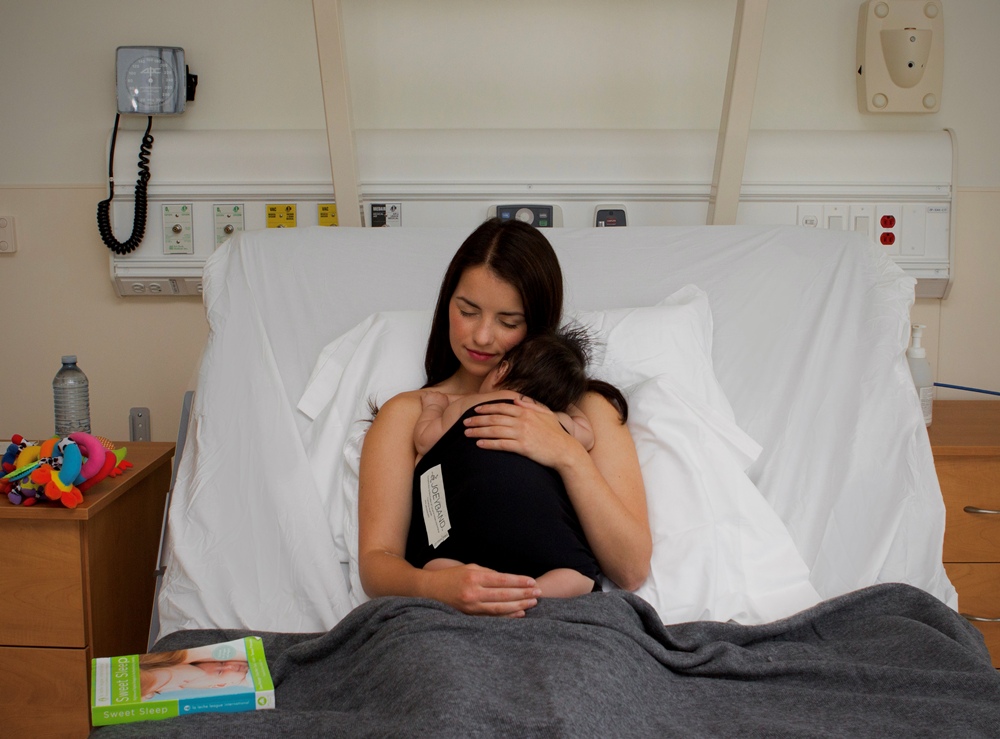
TIME Magazine has published its Best Inventions of 2025, spotlighting 300 innovations making the world a better place. Femtech World spoke to some of those addressing unmet needs in women’s health.
For 25 years, TIME’s Best Inventions issue has been highlighting the most impactful new products and ideas.
This year, several femtech innovations made the list – from predictive pregnancy tools and safer postpartum care to hormone-free contraception and more accessible menstrual products.
Speaking to Femtech World, founders say this reflects a growing global recognition of the importance of technology and innovation for improving women’s experience of health and care worldwide.
“This recognition isn’t just about our company, it’s about what it represents for women’s health and women inventors,” says Sarah-Almaza Cox, co-founder of Joeyband, which made the Honourable Mentions list.
“Femtech has often been overlooked in the broader innovation landscape, yet it holds the power to change how care is delivered, experienced, and valued. For TIME to celebrate devices like Joeyband alongside global innovations signals a shift, one that honours the science, empathy, and leadership women bring to healthcare innovation.”
We take a closer look at the inventions that made the list and how they are helping to close the gender health gap.
HerBrain: “A breakthrough in pregnancy information”
HerBrain, developed by the Geometric Intelligence Lab at the University of California, Santa Barbara and recognised in TIME’s Health and Wellness category, is the first digital twin of the maternal brain.
Led by Professor Nina Miolane, who gave birth herself last year, the tool uses machine learning and brain imaging data from pregnant individuals to model how brain structures change throughout pregnancy and postpartum, allowing expectant mothers to track and anticipate weekly shifts in their brains.
The app is currently in development and is expected to launch in 2027, with the aim of integrating the tool into popular pregnancy apps to give women a clearer picture of how their bodies and brains change during pregnancy.
“Our goal is not only to educate but also to advance understanding of maternal brain health, paving the way for innovations that could benefit all women,” the researchers said in a statement announcing the news.
Mirvie Encompass: “Predicting preeclampsia”
Femtech World award-winner Mirvie’s first-of-its-kind Encompass technology was named in the top Medical and Healthcare inventions category.
Encompass provides personalised predictions of the risk of preeclampsia early in pregnancy through a simple blood test. This allows women and their healthcare providers to take action earlier to support a healthy pregnancy and aims to address increasing preeclampsia rates. TIME highlighted a 10,000-patient study published earlier this year, in which Encompass correctly identified 91 per cent of women who would develop preterm preeclampsia.
Maneesh Jain, CEO and co-founder of Mirvie, commented: “We are proud and honoured that Encompass is recognised as a TIME Best Invention of 2025. For 100 years, the reactive approach to identifying preeclampsia in pregnancy hasn’t changed – until now. “At Mirvie, we’ve invented tools that predict pregnancy complications – like preeclampsia – early enough for moms and their care teams to take preventive action. Innovations like Encompass are essential to delivering the next-generation pregnancy care that is needed to improve maternal health outcomes.”

Miudella, Sebala Women’s Health: “A groundbreaking hormone-free IUD”
The first hormone-free copper IUD to obtain FDA approval in 40 years, Midudell by Sebala Women’s Health, also made TIME’s list.
The device, which aims to improve women’s experience of contraception, was granted approval by the FDA in February 2025. Kelly Culwell, head of research and development at Sebala Women’s Health, explained that Miudella was designed to improve the insertion experience through a preloaded inserter with a rounded tapered tip and narrow insertion tube diameter.
The flexible nitinol frame and lower dose of copper were designed to decrease the side effects of using a copper IUD, including lower rates of expulsion and side effects of bleeding and pain.
“We are delighted that MIUDELLA was named to TIME’s Best Inventions of 2025 list,” Culwell told Femtech World.
“This recognition further supports our belief that the novel design of MIUDELLA will offer an innovative option for birth control for women nationwide.
“The response from healthcare providers, our current study investigators and women has been very positive since FDA approval. There is clearly an unmet need for additional non-hormonal contraceptive options in the US.”
Joeyband: “Uninterrupted skin-to-skin contact”
Making the Honourable Mentions list, Joeyband enables uninterrupted skin-to-skin contact between newborns and their caregivers in hospital settings such as operating rooms and NICUs. Created out of one mother’s experience, the device is now used in hospitals around the world to improve postpartum recovery and health outcomes.
“As a Canadian company, being honoured by TIME’s Best Inventions is deeply meaningful,” says Cox.
“Joeyband was born from a moment of fear, but has transformed into a movement for safer, more connected beginnings for families everywhere. It started with a gap that Hayley Mullins (Inventor of Joeyband) recognised in how mothers and caregivers could safely practice skin-to-skin, and has grown into a device now used in hospitals and homes around the world.
“For us, this recognition reinforces that meaningful innovation doesn’t always come from a lab; sometimes it starts in your living room, holding your newborn, dreaming of a better way.”
Egal Pads on a Roll: “Ultra accessible menstrual pads”
Designed to address poor access to menstrual products and make period care more convenient, Egal Pads’ ‘Pads on a Roll’ were also named in TIME’s Health and Wellness category.
The concept was created by Tom Devlin, whose wife reported on women’s issues for the Boston Globe. By designing pads to resemble a toilet paper roll, which fit into standard dispensers, the aim was to normalise their presence while eliminating the costs associated with vending machines. According to TIME, the company now supplies more than 1,700 schools, libraries, and healthcare facilities.
“We at Egal Pads are thrilled that ‘pads on a roll’ won as one of the best inventions in 2025,” said Penelope Finnie, CEO of Egal Pads.
“This recognition celebrates a product that’s transforming lives with its innovative, accessible design – delivered right where it’s needed, like toilet paper. And we love the fact that it was designed by a man, Tom Devlin, demonstrating how important it is that we all support and understand one another.”

Osteoboost: “Reduce bone loss with a belt”
Another Femtech World award-winner, Osteoboost, also made the list for it’s device which aims to slow bone loss and reduce the risk of fractures in osteoporosis, a condition which disproportionately affects women. The FDA-cleared vibrating belt, which is worn around the hips consistently has been shown in studies to reduce spinal bone loss in by 85 per cent.
In a statement, Osteoboost CEO, Laura Yecies, said: “This award is more than a milestone for Osteoboost; it’s a moment of acknowledgment that bone health matters, that it deserves focus, and that change is finally coming.
“We’re proud to be taking a leadership role in a growing movement that’s driving women’s health into a new era. Women’s health is experiencing a golden age of innovation! From menopause and fertility to cardiovascular and skeletal health, scientific researchers and startup founders are tackling long-ignored needs with energy and empathy. Bone health is emerging into that same zeitgeist. And it’s about time.”
Teal Wand: “At-home cervical cancer test”
The Teal Wand, which aims to make cervical screening more comfortable and accessible for women, was also recognised by TIME. Earlier this year the device became the first at-home screening test for cervical cancer to be FDA-approved.
In a LinkedIn post celebrating the news, the company said: “The Teal Wand was designed to meet women where they are, bringing privacy, comfort, and control to an essential part of preventive care. We’re proud to see women’s health innovation recognised on a global stage and to be part of a movement redefining what it means to design healthcare for women.”
Butterfly iQ3: “A portable solution for rural maternal care”
Approved by the FDA in 2024, Butterfly’s portable ultrasound with 3D imaging was listed in TIME’s Special Mention category. The iQ3 builds on Butterfly’s Ultrasound-on-Chip™ technology to “close critical gaps in healthcare delivery, supporting earlier detection, faster diagnosis and improved patient outcomes.”
With features such as AI-enhanced processing, 3D imaging modes, and versatile anatomical presets, the technology enables clinicians to bring diagnostic capability to settings with limited infrastructure. TIME notes that Butterfly has received investments from the Gates Foundation to support its use for improving maternal outcomes in sub-Saharan Africa.
Momcozy Air 1 Ultra-Slim Breast Pump: “A discreet and portable smart pump”
Also given a Special Mention in the parenting category is the Momcozy Air 1 Ultra-Slim Breast Pump, which allows users to track milk volume in real time and control suction strength via a smartphone app. The slim, discreet design also aims to reduce bulk without sacrificing performance or convenience.
The company’s design philosophy leans on what it describes as “Cosy Tech”, with innovations built around the needs and lived experience of mothers, and feedback from women is crucial for refining usability, comfort, and portability in its products.
Celebrating innovation in women’s health
To compile the list, TIME solicited nominations from its editors and correspondents around the world, as well as an online application process, paying special attention to growing fields, such as health care and AI. Each contender was evaluated on a number of key factors, including originality, efficacy, ambition, and impact.
For all those on the list representing the femtech sector, it’s welcome recognition, acknowledging the wider importance of innovation in women’s health.
As Joeyband’s Sarah-Almaza Cox put it: “This moment belongs to every woman whose idea has made the world a safer, healthier place.”
Entrepreneur
Understanding inflammaging and how preventative health data could help lessen its impact

By Dominique Kent, CEO, Bluecrest
As women, we spend much of our lives juggling, I know this from my own experience.
Running a business, raising a family, caring for parents as they get older, the list is endless. Somewhere in the mix, our own health slips down the priority list.
That is why the idea of inflammaging resonates so strongly with me.
It is a quiet, creeping process in the body: low-level inflammation that builds up over time and accelerates ageing.
Unlike a sprained ankle or a winter flu, you cannot feel it happening.
Yet it’s there, silently increasing the risk of conditions that affect so many women in later life such as heart disease, osteoporosis and dementia.
My background before Bluecrest was in the care sector where I saw first-hand what happens when people live longer but not necessarily well.
Too many spent their final years dealing with pain, frailty and loss of independence.
It shaped my belief that the goal for us all should not just be about lifespan but healthspan: the years we live in good health, able to do the things we enjoy and remain independent.
Inflammaging is a direct and silent threat to this, so it’s something that needs to be addressed.
We as women face some particular challenges here. Hormonal changes during menopause remove a natural buffer against inflammation. Autoimmune conditions, which are often inflammatory, are far more common in women.
There are pressures outside of our biologies too, which often fall more heavily on women: stress, trauma, poor sleep, carrying the invisible load of family responsibilities.
All of these add to the inflammatory burden.
The danger is that inflammaging is invisible, you don’t wake up one day and feel it.
Instead it builds, and its impact often only shows when something serious has developed. This is what makes it so risky.
We already know that women’s health issues are often picked up late, misdiagnosed or brushed aside. Add a hidden process like inflammaging into the mix and you see why prevention is so important.
That focus on prevention is what drew me to Bluecrest.
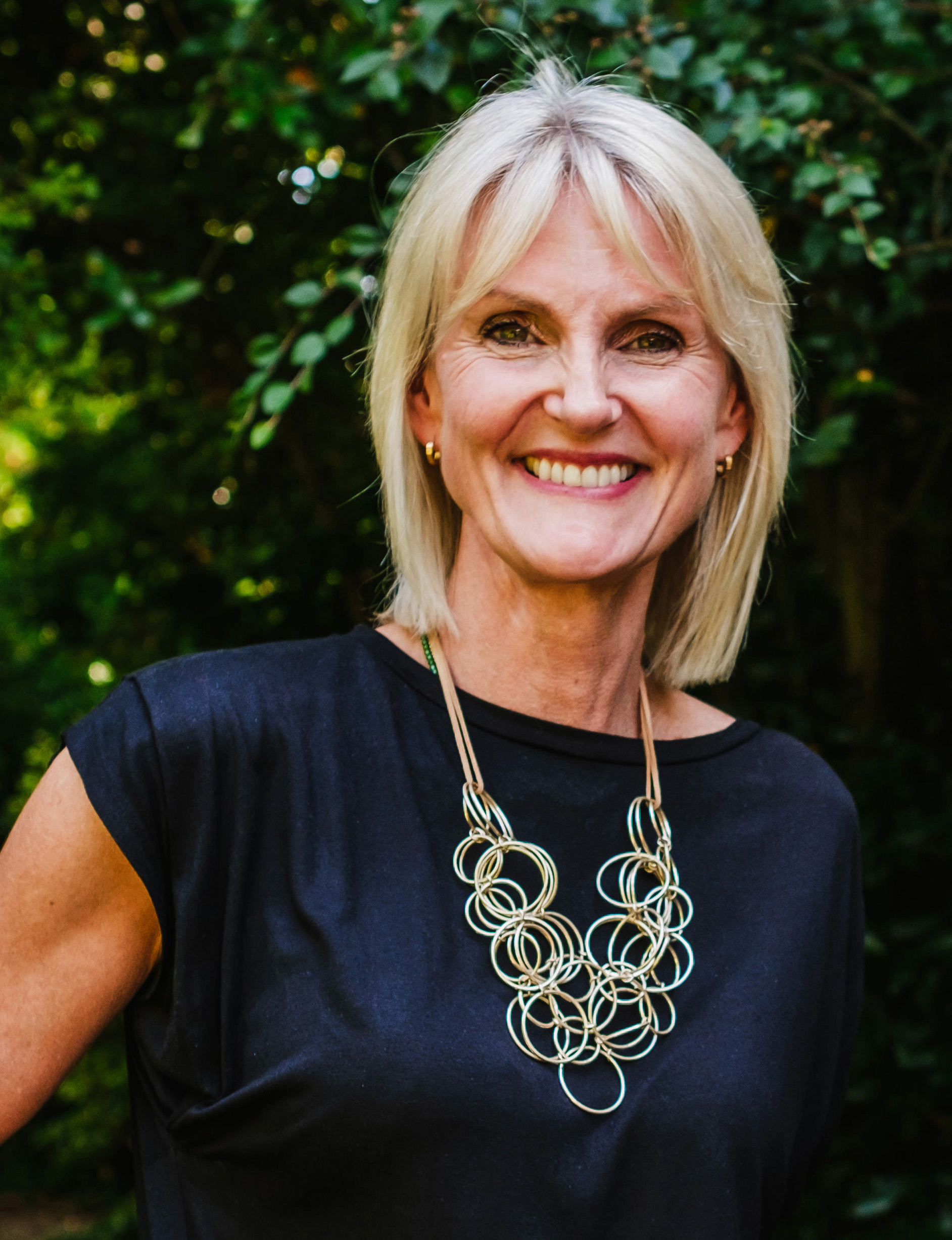
Dominique Kent
The NHS has made prevention a key part of its long-term plan, and rightly so. If we can spot risks earlier, through small and regular interventions, we can act earlier. That is good for individuals and for the health system.
Inflammaging links directly to so many of the chronic conditions that we see in the headlines, the ones that put the heaviest strain on the NHS, so tackling it at source makes sense.
At Bluecrest, I see how empowering it can be when women come for a health check.
Often it is the first time in years they have put themselves at the top of the list, rather than convincing their husbands or parents to get checked out.
The results are not always perfect, but even when they show areas of concern, women tell me they feel in control.
They leave with a plan, and with knowledge which can be a huge turning point.
I also think about this in the context of business.
Midlife is often when women are at the peak of their careers, yet it is also when health issues start to appear. If hidden risks like inflammaging go unaddressed, we lose women from the workforce at a time when their skills and leadership are most needed.
For me, that’s why prevention is not just a personal issue, it is an economic one.
The good news is that there are things we can do.
A balanced diet, regular exercise, proper sleep and managing stress all help reduce inflammation. Stopping smoking and cutting back on alcohol make a difference too.
But it is unrealistic to leave it all to the individual – and we’ll fail if we add this to an already never-ending list of responsibilities that women take on.
This is where femtech has such a vital role to play.
For too long, women have lacked access to the kind of information that would allow them to make confident and informed health decisions. Now we are seeing new technologies emerge that can change that.
From wearable devices that track sleep and stress, to apps that monitor cycle changes, to biomarker tests that give an early picture of cardiovascular or metabolic risk, women can increasingly access the data they need to understand their own bodies and act sooner.
At Bluecrest, we see how powerful it is when women are given personalised health information alongside the expertise and support to understand it. It shifts prevention from being a vague idea into something tangible.
When data is made accessible, women are more likely to act, whether that is adjusting lifestyle choices, speaking to a GP, or booking follow-up tests.
For femtech to really deliver, though, it has to be part of a bigger ecosystem.
Women need healthcare services that take their concerns seriously, workplaces that respect their health needs, and innovations that are affordable and fit in with their lives.
You’re not going to go and get your inflammation levels checked if you have to take a day off work or caring responsibilities and travel 50 miles to get there.
Data is only empowering when it is clear, trusted and connected to practical next steps.
That is the opportunity now: to combine the science of inflammaging with the growing power of technology, so that women can extend not only lifespan but healthspan, with more years lived in good health and independence.
As a female CEO, I feel a responsibility to use my voice on issues like this.
Women’s health has too often been overlooked, underfunded and under-researched.
Inflammaging may be silent, but it does not have to remain invisible.
By naming it, understanding it, and taking action early, we can give women more years of healthy, independent life.

 Opinion2 weeks ago
Opinion2 weeks agoFDA plans to revise black box warning on menopause hormone therapies

 Entrepreneur2 weeks ago
Entrepreneur2 weeks agoAI-powered women’s health companion Nexus launches in UK

 News2 weeks ago
News2 weeks agoScientists turn human skin cells into eggs in IVF breakthrough

 News6 days ago
News6 days agoWomen’s health innovations recognised in TIME’s Best Inventions 2025

 Wellness2 weeks ago
Wellness2 weeks agoDaily pill could delay menopause ‘by years,’ study finds

 News2 weeks ago
News2 weeks agoAncient herb to modern must-have: Why ashwagandha is capturing UK women’s attention
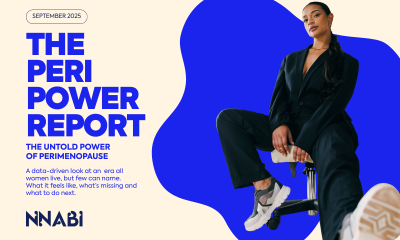
 Menopause3 weeks ago
Menopause3 weeks agoNew report exposes perimenopause as biggest blind spot in women’s health
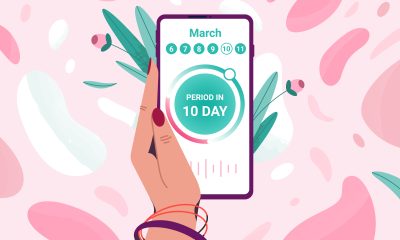
 News1 week ago
News1 week agoMenstrual cycle affects women’s reaction time, study finds




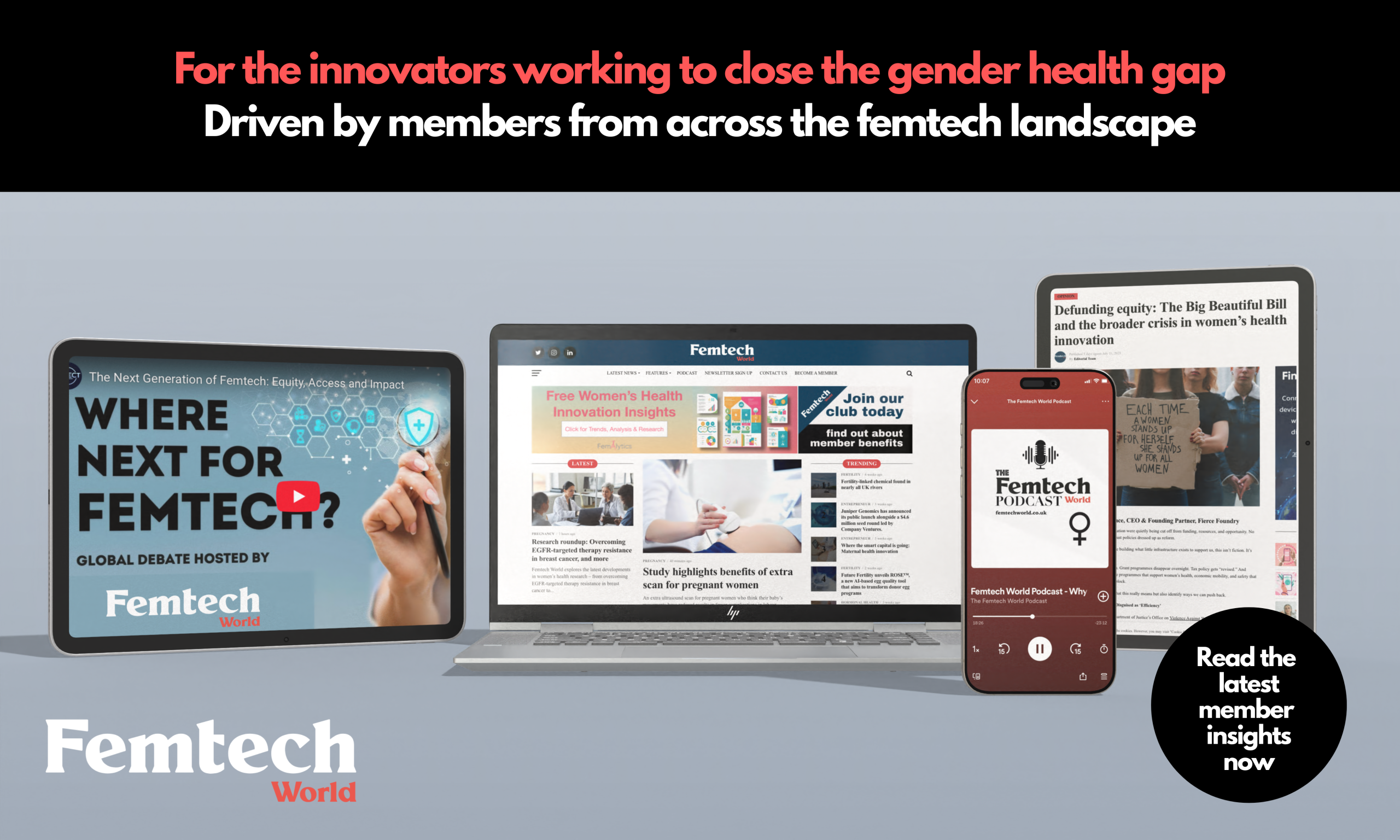





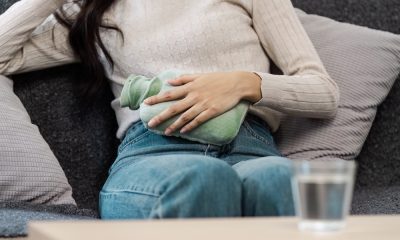

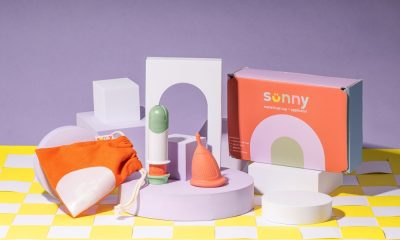
















3 Comments